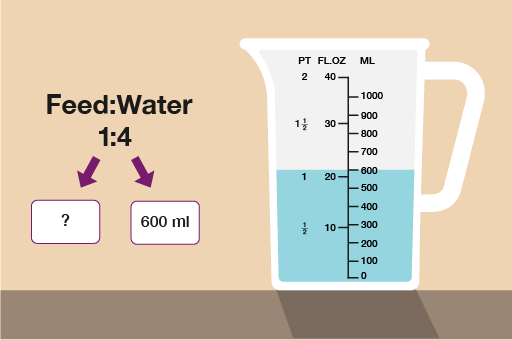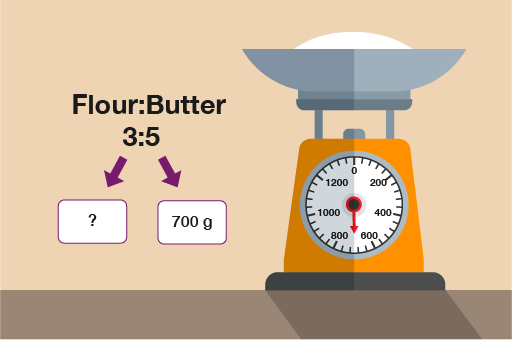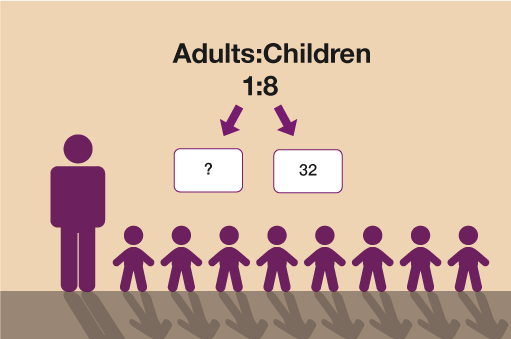7.2 Solving ratio problems where the total of one part of the ratio is given
Take a look at the worked example below:
You are growing tomatoes. The instructions on the tomato feed say:
Use 1 part feed to 4 parts water
If you use 600 ml of water, how much tomato feed should you use?
These questions make much more sense if you look at them visually:
You can now see clearly that 600 ml of water is worth 4 parts of the ratio. To find one part of the ratio you need to do:
600 ml ÷ 4 = 150 ml
Since the feed is only 1 part, feed must be 150 ml. If feed was more than one part you would multiply 150 ml by the number of parts.
Activity 14: Ratio problems with one part given
Practise your skills by tackling the ratio problems below:
A recipe requires flour and butter to be used in the ratio 3:5. The amount of butter used is 700 g. How much flour will be needed?
When looking after children aged between 7 and 10, the ratio of adults to children must be 1:8.
a.For a group of 32 children, how many adults must there be?
b.If there was one more child in the group, how would this affect the number of adults required?
Answer
Flour:Butter
To find one part you do 700 g ÷ 5 = 140 g
To find the amount of flour needed you then do 140 g × 3 = 420 g flour.
(a)
To find one part you do 32 ÷ 8 = 4.
Since adults are only 1 part, you need 4 adults.
(b) If there were 33 children, one part would be 33 ÷ 8 = 4.125.
Since you cannot have 4.125 adults, you need to round up to 5 adults so you would need one more adult for 33 children.



